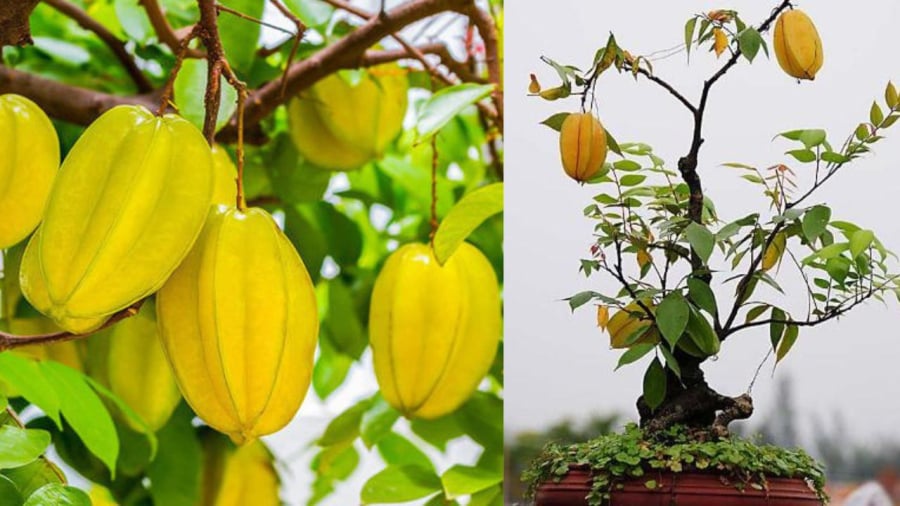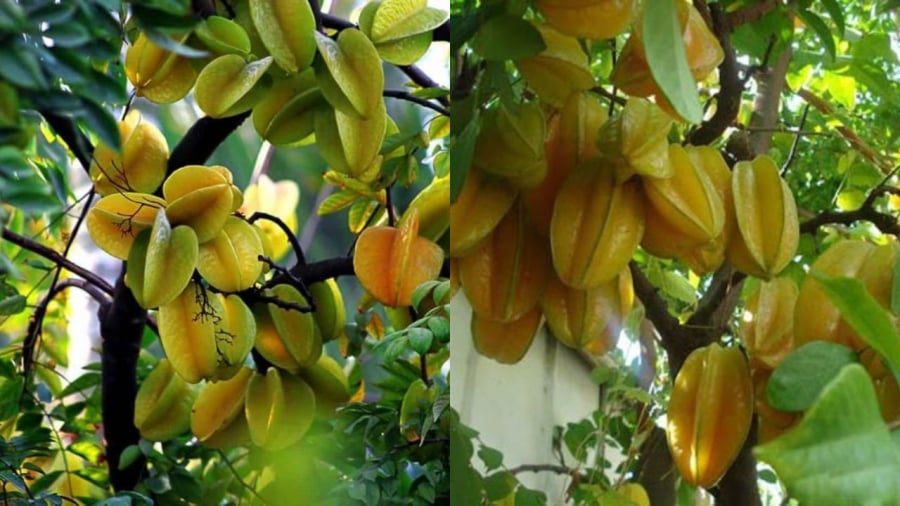The Carambola, or Star Fruit tree, is a popular choice for a decorative plant, with many opting to grow it as a bonsai tree. This tree is known for its abundant flowers and fruit. The tiny purple flowers are a beautiful sight, and the bright yellow star-shaped fruits hang in eye-catching clusters.
The fruits and leaves of the Carambola tree are also used in traditional medicine. Many families enjoy growing this tree in pots for its aesthetic appeal and tasty fruit. However, some gardeners experience issues with fruit drop and rot before the fruits have a chance to ripen…
Here are some tips for taking care of your Carambola tree
Pay attention to the tree’s water needs: Carambola trees thrive in moist conditions, especially when potted. Ensure you water regularly, about twice as often as you would for a regular tree, reducing frequency after the first three months. Newly potted young trees require more frequent watering.

Carambola Tree as a Feng Shui Ornamental Plant
Prune your tree to ensure sufficient sunlight: Pruning encourages growth and helps create more branches, leading to more flowers and fruit. The best time to prune is before flowering and after harvesting fruit. The trunk is susceptible to sun damage and cracking, so create a canopy by pruning to protect it. As the tree grows, thin out dense branches to promote airflow: remove old, crowded, diseased, or weak branches.
Fertilize correctly: Traditionally, it is believed that fertilizing with animal remains will result in sweeter fruit. When the tree is bearing fruit, avoid nitrogen-rich fertilizers and instead use potassium, ash, and lime to improve fruit quality.
Prevent pest infestations: Carambola trees are susceptible to damage by moth larvae (Lepidoptera), fruit flies, and ants, which can cause flower drop and fruit rot. Spray with a 0.2% Trebon solution when the fruits are small, as spraying larger fruits increases the risk of toxicity. Annually, during the dry season, apply a limewash to the tree’s base to protect it from borers and other pests. You can also cover the tree with a net to prevent birds and insects from damaging the fruit.

Abundant Fruits with Proper Care
Special care during the fruiting stage
During this stage, the tree requires ample moisture, so water twice a day, in the morning and evening. Insufficient water will cause fruit drop. Keep an eye out for ants and bees, as these insects can cause fruit drop. Sprinkle lime powder to repel ants and use a flame to gently smoke out bees, or use protective bags to cover the fruit.
Prune the tips of developing branches when they reach about 20cm in length. If possible, prune all branches to encourage new growth from the leaf axils, which will bear tiny clusters of flowers. Continue to fertilize and water the tree to support fruit development.
For taller trees, only break the lower, thicker branches, leaving the higher, thinner ones for the next pruning session.
Pinch off the growing tips and withhold water for 2-3 days. Then, apply a highly diluted urea solution. In about 50 days, the tree should flower and bear large fruit.
To encourage fruit set and abundant yields, apply organic matter to the base of the tree at least twice a year and fertilize with bat guano every two months. Occasionally, you can also water with rice washing water once a week.






























